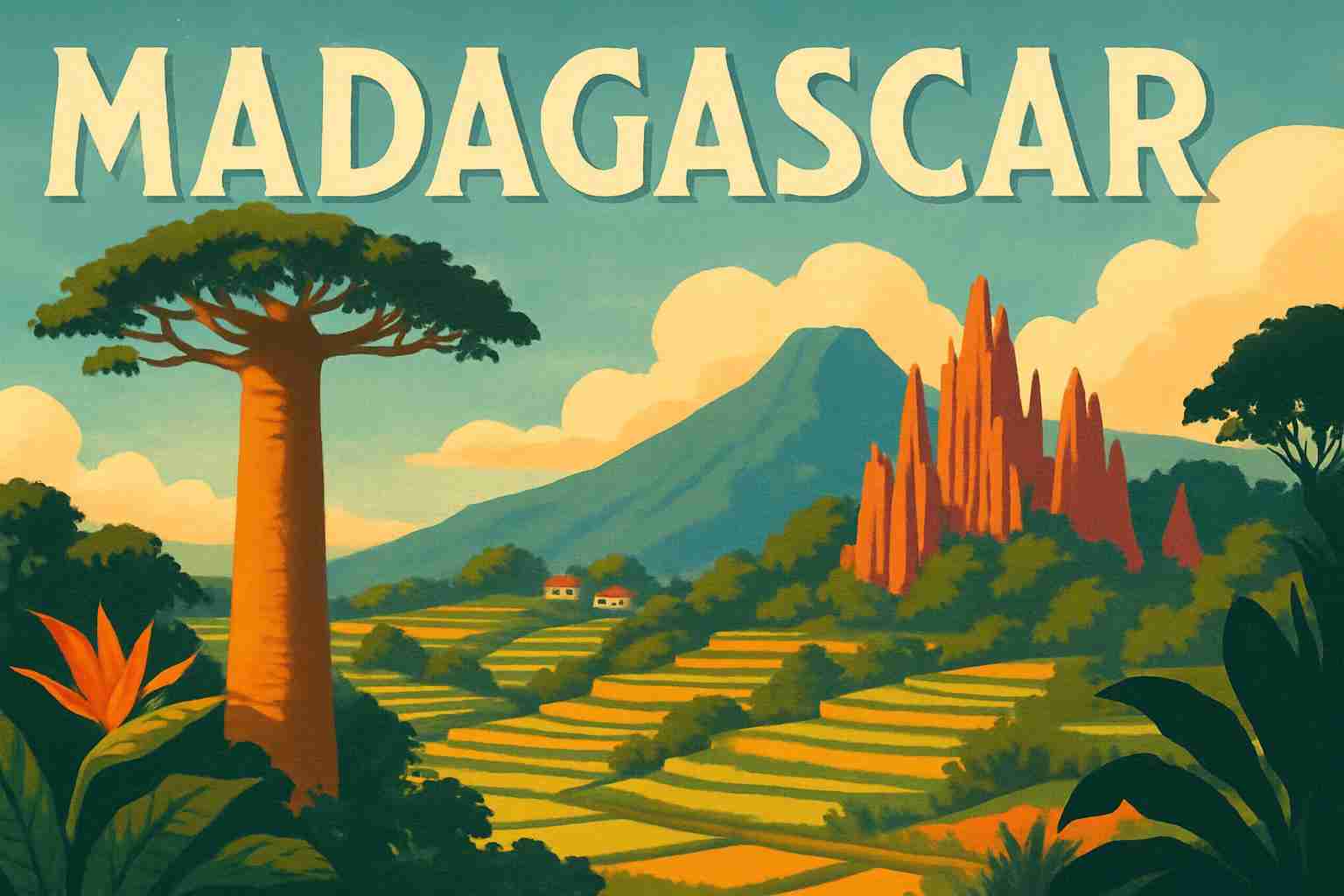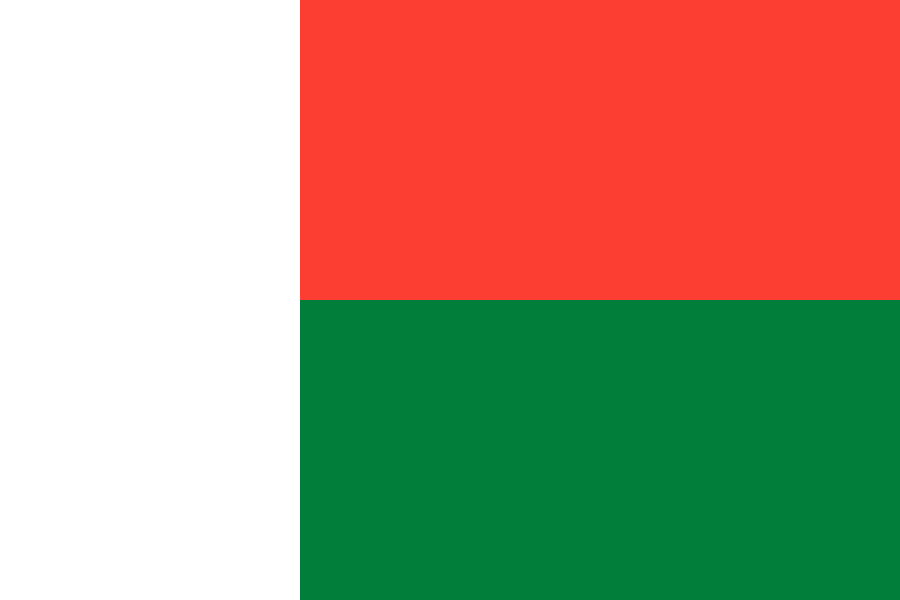Currency in Madagascar: MGA Send & Spend FX Guide
 Resources for Expats, Travelers and Entrepreneurs Navigating Life and Trade in Madagascar with the Malagasy ariary.
Resources for Expats, Travelers and Entrepreneurs Navigating Life and Trade in Madagascar with the Malagasy ariary.

What's in this Madagascar currency guide?
What currency is used in Madagascar?
The official currency of Madagascar (country code: MG) is the Malagasy ariary, with symbol Ar and currency code MGA.
What is a good Malagasy ariary exchange rate?
The BestExchangeRates.com currency comparison table below helps you see the total cost of your currency transaction by showing the exchange rates offered by different providers. It also makes it easy to spot potential savings from market-leading FX services compared to bank rates.
To see a full list of rates, enter your transaction type, currencies and amount then click ‘GET RATES’:
Loading rates...
|
|
|
Good things to know about the Malagasy ariary
The US imposed a 47% reciprocal tariff rate on goods from Madagascar as part of Trump’s growing trade war with countries around the world.
The Malagasy ariary (MGA) is the official currency of Madagascar, an island nation located off the coast of East Africa. Here are a few things to know about the Malagasy ariary:
1. The Malagasy ariary is abbreviated as MGA and is divided into 5 iraimbilanja.
2. The Central Bank of Madagascar is responsible for issuing and regulating the Malagasy ariary.
3. The exchange rate for the Malagasy ariary is determined by supply and demand in the foreign exchange market.
4. Madagascar has a largely agricultural economy, with a significant portion of the population engaged in farming and livestock production. The country is also a major producer of vanilla and has a growing tourism industry.
5. The value of the Malagasy ariary has been relatively stable in recent years, but the currency has faced challenges due to economic challenges such as high inflation and a large trade deficit. In addition, Madagascar has faced political instability and conflict, which have also had an impact on the value of the Malagasy ariary.
For more MGA information check out our selection of Malagasy ariary news and guides.
Frequently Asked Questions
What currency should I use in Madagascar?
The domestic currency in Madagascar is the Malagasy ariary.
What is the Malagasy ariary currency code and symbol?
The three letter currency code for the Malagasy ariary is MGA — symbol is Ar.
Which countries use the Malagasy ariary?
It is the domestic currency in Madagascar.
Is the Malagasy ariary a closed currency?
No, the Malagasy ariary is freely available and convertible. See guide: What is a closed currency?
What are equivalent amounts of INR and MGA?
Here are some popular conversion amounts for INR to MGA (Indian rupee to Malagasy ariary)*.
*Converted at the current INRMGA interbank exchange rate. Calculate actual payout amounts for Send Money and Travel Money exchange rates.

Travel money for Madagascar
Using Wise for Malagasy ariary travel money is a smart choice for savvy travelers. With its competitive exchange rates and low fees, Wise allows you to convert and manage multiple currencies effortlessly.
Be careful when using your own bank's Debit/Credit Card, as your bank may also charge an extra 3% as an “Overseas Transaction Charge” plus “Overseas ATM” fees for withdrawing cash on top of the standard Visa/Mastercard 2.5% from market mid-rate.
For card purchases, if you are offered a choice of currencies always select to Pay in Malagasy ariary otherwise you will typically get much worst dynamic currency conversion (DCC) exchange rates.
If you really want Malagasy ariary cash before departure, you can save money by ordering online. You generally get better rates and can pick up the MGA cash locally or even on travel day at the airport.
Madagascar: Travel Guide
Traveling to Madagascar requires careful financial planning to ensure a smooth and cost-effective experience. Here's a comprehensive guide to help you navigate currency considerations and manage your money effectively during your visit.

Madagascar is unique: 5% of all known animal and plant species can be found here, and here alone. The island's signature animal is the lemur of course, but there are many more weird and wonderful creatures. Trees and plants are just as impressive, be they the distinctively shaped baobabs, the fanning ravinala (travellers' palm), the hundreds of orchids or the spiny forests of the desert south.
The remarkable fauna and flora is matched by epic landscapes of an incredible diversity: you can go from rainforest to desert in just 300km. Few places on Earth offer such an intense kaleidoscope of nature.
What currency to use in Madagascar?
The local currency in Madagascar is Malagasy Ariary. There are money changing facilities (forex bureaux & bank kiosks) available at the major banks in Antananarivo or at the airport on your arrival. You will be able to change money at most main towns and cities. The most accepted foreign currency is the Euro, although the US Dollar is also accepted. There are ATM machines available in the major towns and the most widely accepted card is Visa. All ATMs will only dispense Ariary. There are very few places where credit cards can be used so only use it as an absolute emergency.
How to get around Madagascar?
Flying within Madagascar can be a huge time saver, considering the distances and state of the roads. Unfortunately most domestic routes are between Tana and the provinces, with few direct routes between provinces. Internal flights are also notoriously unreliable; you are therefore strongly advised to leave plenty of time if you need to catch an onward flight. Tickets are expensive (upwards of €200 for a one-way ticket), but generally exchangeable. You can pay for tickets by credit card or in ariary, euros or US dollars at the head office in Antananarivo and Air Madagascar offices in larger towns. Smaller offices may only accept ariary or euros, however.
In parts of Madagascar, notably the northeast and southwest coasts and Canal des Pangalanes, cargo boats (sometimes called boutres) are the primary means of transport. Cargo boats have no schedules and leave with the tides. There are no amenities, so passengers travel on deck, where they are exposed to the elements. Capsizing occurs regularly, so don’t get in if the seas are rough, or if the boat is overcrowded.
In Madagascar the road-transport system is such that most rental cars come with a mandatory driver, making the choice of both a critical decision in your travel planning. Go through an agency, your hotel or a word-of-mouth recommendation. Either way, it is essential you shop around. Talk to the driver ahead of time. Make sure you speak a common language and that the driver has experience in your region. If you’re not hiring through a reputable agency, take a look at the car, particularly if you are going on a long journey. See how well the driver takes care of it.
Travel tips for Madagascar.
The tourist season startS in April and goes until the end of November. The Whale season around Saint Marie is mid June to mid September, a great time if you have never seen these big mammals in action. June to August is Malagasy winter and it can be chilly on the highlands, but nicely warm towards the coasts and dry. The greatest variety of scenery you will encounter is if you travel from Antananarivo to Tulear. Also called the South route or the National Road Nr7.
Madagascar is very cheap to visit and most travellers will find that their money goes much further than they had expected. A simple double room in a guesthouse usually comes in at around USD $10-15, while a more upmarket hotel will cost about USD $20-30.Food can be found for as little as USD$1 and a full meal with a beer won't set you back more than about USD $5-7 depending on how much you eat. Tap water is never safe to drink in Madagascar and visitors to the country should stick solely to bottled mineral water or boiled/purified water if bottled water is not available. Avoid ice in your drinks as this may have been made with unhygienic water.

Everyday Costs in in Madagascar
How much does it really cost to live, work, or travel in Madagascar? Here's what to expect for daily expenses and expat living.
Currency Guide: Madagascar (MG)
For travelers planning a week-long mid-range stay in Madagascar, a budget of around 1,500,000 Malagasy Ariary (MGA) should cover all essentials comfortably. This budget allows you to enjoy a mix of local attractions, meals, and transportation without feeling overly constrained. Here’s a quick glance at typical daily expenses in Madagascar to help shape your itinerary:
- 🍽️ Meal at a local restaurant: 10,000 – 25,000 MGA
- ☕ Coffee: 3,000 – 7,000 MGA
- 🚍 Public transport fare: 1,000 – 4,000 MGA
- 📱 Prepaid SIM card: 15,000 – 30,000 MGA
- 🏨 Budget hotel or Airbnb: 100,000 – 200,000 MGA
Overall, Madagascar is considered a cheap destination relative to many Western countries. For comparison, visitors from the United States may find that their expenses are significantly lower in Madagascar, especially when justifying the cost of dining out and accommodation. Compared to the UK, the cost of living and travel experiences in Madagascar can be around 60-70% less expensive, making it an attractive option for budget-conscious adventurers.
Tips for Expats in Madagascar
For expats living in Madagascar, the typical monthly living costs can fluctuate between 2,000,000 to 3,500,000 MGA, depending on lifestyle choices and location. This budget generally encompasses rent, utilities, groceries, and entertainment. When it comes to banking and card usage, it’s advisable to have a local bank account for convenience. Major credit cards are accepted in larger establishments but may not work in smaller shops or rural areas, so carrying some cash is essential.
Regarding the exchange of money, using local ATMs can be beneficial due to competitive rates, but make sure to check for any transaction fees. Alternatively, online transfer services like Wise and OFX offer favorable rates and lower fees, which can be particularly handy for large sums or regular payments. Overall, for expats, utilizing a combination of local cash and online transfer services tends to provide the best balance between convenience and cost-effectiveness.
USD/MGA Market Data
The below interactive chart displays the USD/MGA change and UP📈 DOWN📉 trends over the past 1 Year.
Send Money to Madagascar - Best Rates
To get a good (and fair) exchange rate when sending money to Madagascar you need to find and compare exchange rates for International Money Transfers (IMTs).
The available FX rates for sending money abroad can be very different to the mid-market (wholesale) rate which you see reported online and in the News.
You should especially compare your own bank's exchange rates to those available from Money Transfer specialists to see how much you can save - we make that calculation easy in the below table.
Get a better deal for foreign transfers to Madagascar
When sending money to Madagascar it’s important to compare your bank’s rates & fees with those we have negotiated with our partner money transfer providers. To get a better deal you should follow these 4 simple steps :
- Open an account with a BER reviewed FX provider (id docs may be required)
- You specify the local or Malagasy ariary amount you want to transfer
- Make a local currency domestic transfer for the requested amount to the provider's bank account in your country
- Once your funds are received by the provider the converted MGA amount will be transfered to the recipient account you specify in Madagascar.
Use the above calculator to compare the exchange rates of FX specialist providers rates versus your bank's standard rates you can hopefully save around 5% and maybe more - end result is more Malagasy ariary deposited into the recipient bank account and less margins and fees kept by the banks!
